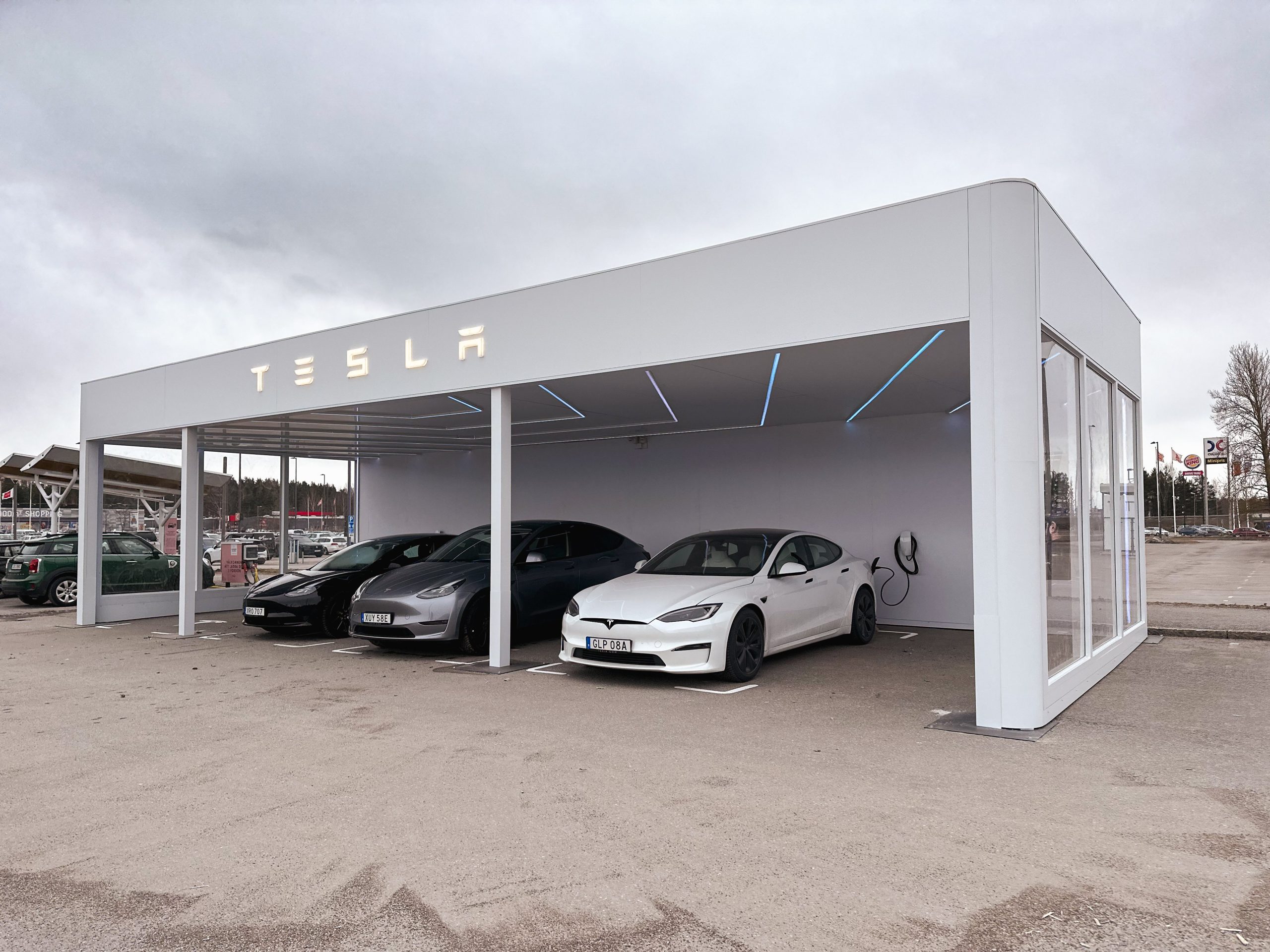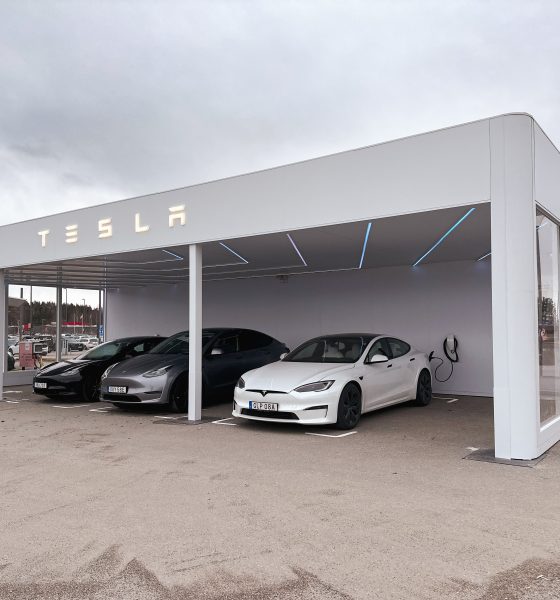

News
Court rules against Tesla Sweden in license plate withholding suit
A court in Sweden has ruled that Tesla can’t force a local post provider to resume deliveries of the company’s license plates, after the country’s largest postal service joined labor efforts last year by withholding all mail from the company.
PostNord, Sweden’s largest mail provider, joined strikes lodged against Tesla by union IF Metall last November, going on to halt the delivery of the company’s license plates. Tesla Sweden launched lawsuits against both PostNord and the Swedish Transport Agency, which issues plates but has refused requests to utilize a different mail carrier.
At this point, the labor efforts and the suit have been ongoing for nearly a year, forcing Tesla Sweden to deliver some of its vehicles without license plates altogether, and to later use temporary replacement plates.
On Friday, however, a district court in Sweden ruled that Tesla couldn’t force PostNord to resume the delivery of license plates, claiming that the country’s constitution forbids government agencies from intervening in labor efforts, as The New York Times reports.
“Parties in the labor market have the right to take action, and the state should not intervene,” said Patrik Alm, a Solna District Court senior judge.
RELATED:
New Tesla Superchargers blocked by union efforts in Sweden: report
The license plate withholding followed strikes in which Tesla service workers were asked by IF Metall to stop performing service on the company’s vehicles, though most service was able to resume earlier this year.
Currently, Tesla has new owners apply directly for license plates, and new tags are delivered straight to owners by the Transport Agency, without ever needing to go through the automaker’s stores. Tesla has also found other workaround solutions for related strikes, such as having units delivered by land to bypass a dockworker’s strike that ceased ship imports of the company’s electric vehicles (EVs).
PostNord workers are represented by the Swedish Union for Service and Communications Employees union, referred to as Seko. Meanwhile, around 70 percent of workers in Sweden are members of a union, and both Seko and IF Metall have noted that the company’s efforts against signing a collective bargaining agreement are in opposition to the country’s workforce culture of mutual cooperation between employees and employers.
“Now it’s probably time for Tesla to stop fooling around and respect the Swedish collective agreement model,” said Gabriella Lavecchia, Seko union president. “The fact that they spend so much time and energy trying to get around the game rules is just a signal that they have big problems.”
Tesla still has the option to appeal the ruling in a higher court within the next three weeks, and the labor efforts seemingly haven’t slowed the company’s sales too significantly in the EV-dense country. According to data from Mobility Sweden, Tesla sales in Sweden have increased by 1 percent to 16,478 vehicles delivered in the first nine months of the year.
Tesla Supercharger installations continue in Sweden despite Union opposition
What are your thoughts? Let me know at zach@teslarati.com, find me on X at @zacharyvisconti, or send us tips at tips@teslarati.com.

News
Tesla FSD fleet is nearing 7 billion total miles, including 2.5 billion city miles
As can be seen on Tesla’s official FSD webpage, vehicles equipped with the system have now navigated over 6.99 billion miles.

Tesla’s Full Self-Driving (Supervised) fleet is closing in on almost 7 billion total miles driven, as per data posted by the company on its official FSD webpage.
These figures hint at the massive scale of data fueling Tesla’s rapid FSD improvements, which have been quite notable as of late.
FSD mileage milestones
As can be seen on Tesla’s official FSD webpage, vehicles equipped with the system have now navigated over 6.99 billion miles. Tesla owner and avid FSD tester Whole Mars Catalog also shared a screenshot indicating that from the nearly 7 billion miles traveled by the FSD fleet, more than 2.5 billion miles were driven inside cities.
City miles are particularly valuable for complex urban scenarios like unprotected turns, pedestrian interactions, and traffic lights. This is also the difference-maker for FSD, as only complex solutions, such as Waymo’s self-driving taxis, operate similarly on inner-city streets. And even then, incidents such as the San Francisco blackouts have proven challenging for sensor-rich vehicles like Waymos.
Tesla’s data edge
Tesla has a number of advantages in the autonomous vehicle sector, one of which is the size of its fleet and the number of vehicles training FSD on real-world roads. Tesla’s nearly 7 billion FSD miles then allow the company to roll out updates that make its vehicles behave like they are being driven by experienced drivers, even if they are operating on their own.
So notable are Tesla’s improvements to FSD that NVIDIA Director of Robotics Jim Fan, after experiencing FSD v14, noted that the system is the first AI that passes what he described as a “Physical Turing Test.”
“Despite knowing exactly how robot learning works, I still find it magical watching the steering wheel turn by itself. First it feels surreal, next it becomes routine. Then, like the smartphone, taking it away actively hurts. This is how humanity gets rewired and glued to god-like technologies,” Fan wrote in a post on X.
News
Tesla starts showing how FSD will change lives in Europe
Local officials tested the system on narrow country roads and were impressed by FSD’s smooth, human-like driving, with some calling the service a game-changer for everyday life in areas that are far from urban centers.

Tesla has launched Europe’s first public shuttle service using Full Self-Driving (Supervised) in the rural Eifelkreis Bitburg-Prüm region of Germany, demonstrating how the technology can restore independence and mobility for people who struggle with limited transport options.
Local officials tested the system on narrow country roads and were impressed by FSD’s smooth, human-like driving, with some calling the service a game-changer for everyday life in areas that are far from urban centers.
Officials see real impact on rural residents
Arzfeld Mayor Johannes Kuhl and District Administrator Andreas Kruppert personally tested the Tesla shuttle service. This allowed them to see just how well FSD navigated winding lanes and rural roads confidently. Kruppert said, “Autonomous driving sounds like science fiction to many, but we simply see here that it works totally well in rural regions too.” Kuhl, for his part, also noted that FSD “feels like a very experienced driver.”
The pilot complements the area’s “Citizen Bus” program, which provides on-demand rides for elderly residents who can no longer drive themselves. Tesla Europe shared a video of a demonstration of the service, highlighting how FSD gives people their freedom back, even in places where public transport is not as prevalent.
What the Ministry for Economic Affairs and Transport says
Rhineland-Palatinate’s Minister Daniela Schmitt supported the project, praising the collaboration that made this “first of its kind in Europe” possible. As per the ministry, the rural rollout for the service shows FSD’s potential beyond major cities, and it delivers tangible benefits like grocery runs, doctor visits, and social connections for isolated residents.
“Reliable and flexible mobility is especially vital in rural areas. With the launch of a shuttle service using self-driving vehicles (FSD supervised) by Tesla in the Eifelkreis Bitburg-Prüm, an innovative pilot project is now getting underway that complements local community bus services. It is the first project of its kind in Europe.
“The result is a real gain for rural mobility: greater accessibility, more flexibility and tangible benefits for everyday life. A strong signal for innovation, cooperation and future-oriented mobility beyond urban centers,” the ministry wrote in a LinkedIn post.
News
Tesla China quietly posts Robotaxi-related job listing
Tesla China is currently seeking a Low Voltage Electrical Engineer to work on circuit board design for the company’s autonomous vehicles.

Tesla has posted a new job listing in Shanghai explicitly tied to its Robotaxi program, fueling speculation that the company is preparing to launch its dedicated autonomous ride-hailing service in China.
As noted in the listing, Tesla China is currently seeking a Low Voltage Electrical Engineer to work on circuit board design for the company’s autonomous vehicles.
Robotaxi-specific role
The listing, which was shared on social media platform X by industry watcher @tslaming, suggested that Tesla China is looking to fill the role urgently. The job listing itself specifically mentions that the person hired for the role will be working on the Low Voltage Hardware team, which would design the circuit boards that would serve as the nervous system of the Robotaxi.
Key tasks for the role, as indicated in the job listing, include collaboration with PCB layout, firmware, mechanical, program management, and validation teams, among other responsibilities. The role is based in Shanghai.
China Robotaxi launch
China represents a massive potential market for robotaxis, with its dense urban centers and supportive policies in select cities. Tesla has limited permission to roll out FSD in the country, though despite this, its vehicles have been hailed as among the best in the market when it comes to autonomous features. So far, at least, it appears that China supports Tesla’s FSD and Robotaxi rollout.
This was hinted at in November, when Tesla brought the Cybercab to the 8th China International Import Expo (CIIE) in Shanghai, marking the first time that the autonomous two-seater was brought to the Asia-Pacific region. The vehicle, despite not having a release date in China, received a significant amount of interest among the event’s attendees.








